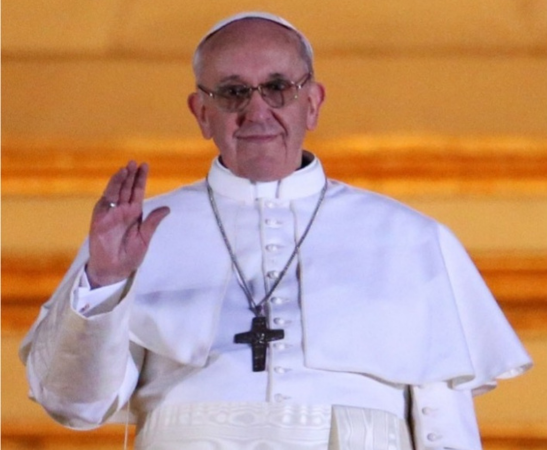The Death of Pope Francis took place last Monday 21st April at 7.35 a.m. On Easter Sunday the Holy Father gave the Urbi et Orbi blessing to the ‘City and the World; he even travelled in his Popemobile around St Peter’s Square to be with the people for the last time. A true shepherd right to the end. He died from a stroke and heart failure.
The election of Jorge Mario Bergoglio as pope in March 2013 was unexpected, even to the then cardinal archbishop of Buenos Aires himself. He may have come a distant second in the previous papal conclave in 2005, but at 76 and, following the resignation on the grounds of old age of the candidate who had come first back then, the 85-year-old Benedict XVI – Bergoglio was convinced that a younger man was needed.
However, the majority of cardinals who gathered in the Sistine Chapel to vote were looking for something more than (relative) youth. Top of their agenda as they assembled was openness to fresh thinking after 35 years of no change under the almost seamless reigns of Pope John Paul II and Benedict, his erstwhile right-hand man. And so, they surprised everyone by opting for Catholicism’s first Jesuit pope, the first Latin American successor to Saint Peter, and first leader from outside Europe in over a millennium.
Immediately, Bergoglio signalled unambiguously that he intended to be a different kind of pope, one for the 21st century. He boldly chose to be known as Francis, becoming the first pontiff to take on the name of the radical saint from Assisi who had turned his back on privilege and status in this world, and lived with and for the poor. No more pomp and ceremony, the new pope seemed to be saying, but sleeves rolled up and joining the fight for social and economic justice.
On the night of his election, he stepped out on the balcony, smiling winningly, Francis described himself as an outsider, someone “from the end of the world”, who wanted to “walk together and work together” with the crowds who greeted him, rather than tell them what to do.
The excitement was palpable for believers and non-believers alike. Next, Francis declined to move into the gilded papal apartment vacated by his predecessor. Instead, he was going to remain in the small room in the Santa Marta hostel in the Vatican where he had stayed during the conclave.
This personal modesty never wavered in all his years in Rome. He picked up his own phone, shunned limos and preferred to walk if possible (sciatica later caused him to use a wheelchair) – as, for example, on the day after his election when he slipped away on foot to collect his suitcase and settle the bill at the modest pensione where he had been booked in before the conclave began. If it had to be four wheels, he took a bus, or frequently squeezed his bulky frame into the papal Fiat 500 saloon.
“Bergoglio was a once-in-a-generation combination of two qualities seldom found together,” his biographer Austen Ivereigh wrote. “He had the political genius of a charismatic leader and the prophetic holiness of a desert saint.”
The papacy has for centuries brought with it a place on the world stage. Francis, who from the off gave the impression of being a man in a hurry, was determined to use that platform to push a bottom-up agenda for the world. He insisted that Catholicism would henceforth be “a poor church for the poor”, and returned time and again in his pronouncements to the need to close the economic gap between developed and developing nations.
It was a crusade that saw him take a leading role in tackling the challenges faced by a warming planet, castigating and chivvying politicians who refused to grasp the threat posed to the future of humanity by climate change. His May 2015 encyclical, Laudato Si’ (Praise Be to You), an impassioned cry of pain at what was happening to the Earth and especially to its poorest, most vulnerable inhabitants because climate change was going unchecked, was read widely outside the usual Catholic circles. It is held by many experts to have galvanised those who gathered in Paris at the end of that year to set a target of limiting global temperature increases to 1.5 degrees. Pope Francis remained totally committed to the protection of the planet and the environment throughout the whole of his pontificate.
Pope Francis was born of Italian parents who had settled in Argentina. He entered the Society of Jesus, (the Jesuits), eventually becoming the Cardinal Archbishop of Buenos Aries. He would regularly take the metro to visit the city’s poorest areas, lived in a simple apartment rather than the archbishop’s palace and turned his predecessor’s stately office into a storeroom for food and clothes for the poor.
I’m sure many of us will remember the Holy Father coming into St Peter’s Square at dusk in the pouring rain. A solitary figure holding the Cross and addressing the whole world at the beginning of the pandemic.
Two major themes were manifested throughout the Pontificate of Pope Francis, Mercy – as he called a special Holy Year of Mercy back in 2015, and Hope – which is the main theme of this Holy Year 2025 – Pilgrims of Hope.
His passionate love of the poor was evident throughout the whole of his pontificate, his first pastoral visit to Lampedusa to visit migrants and those seeking asylum. On every pastoral visit he would always talk about societies responsibility and care of the poor. His own simplicity of life certainly reflected that of St Francis of Assisi, his namesake as Pontiff.
Francis’ interventions on the environment were intertwined with his concern for the poorest, who he saw as suffering the worst impacts of climate disasters while wealthier countries refused their fair share of the burden. He discussed the “right of the environment” at the United Nations, released two encyclicals urging action at UN climate talks, and announced plans to include “ecological sin” in official Catholic teaching.
His last words to the world on Easter Sunday, the greatest event of Christianity, was to wish the world a Happy Easter. Hours before his death, he travelled by Popemobile through St Peter’s Square greeting the Easter crowds, he was amid his people, where he felt most comfortable.
As Pope, he ended each meeting asking people to “pray for me.” Millions around the globe are now likely to be doing so for a leader who strove to leave the world, and the church, in a better place.
The funeral Mass this weekend will lay Pope Francis to rest; he will be buried in his favourite Basilica of St Mary Major.
MAY HE REST IN PEACE, AND RISE IN GLORY
Brentwood Cathedral will be holding our own mass for the passing of Pope Francis. More details can be found here.


